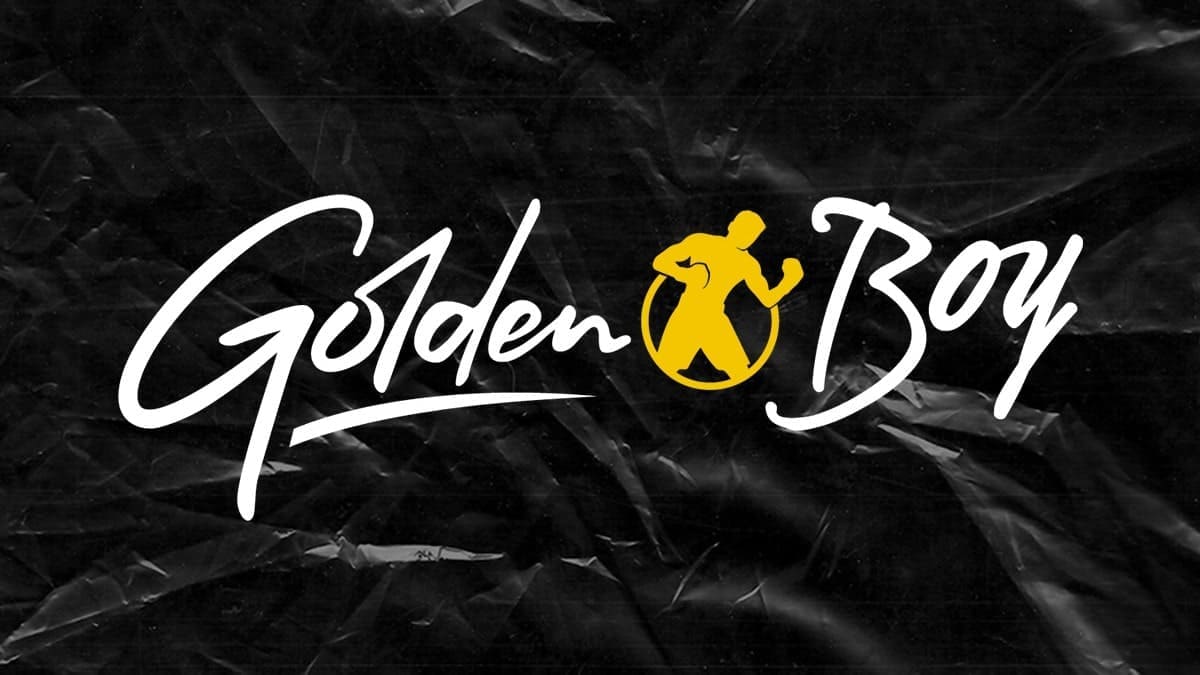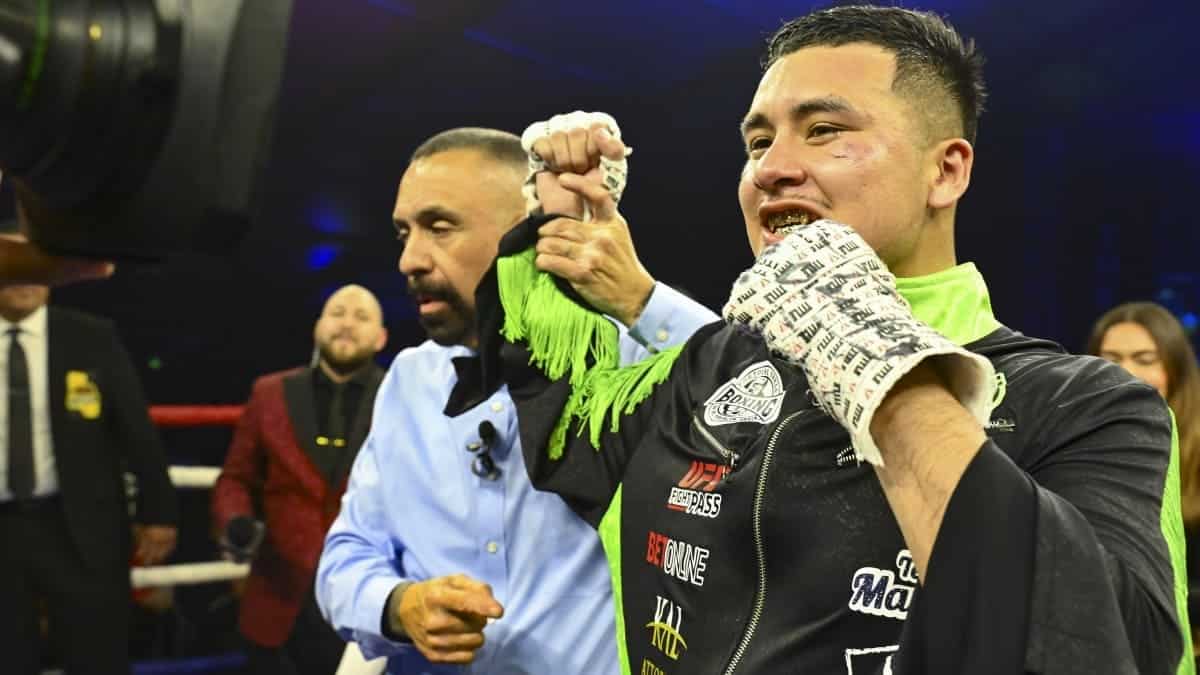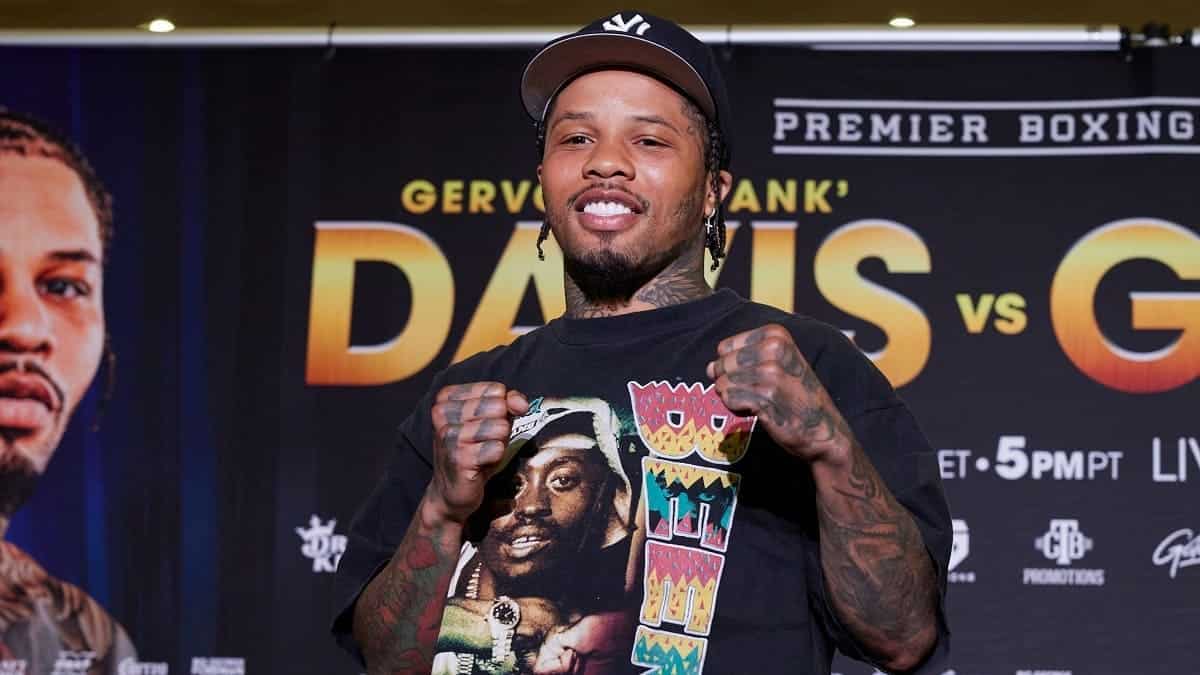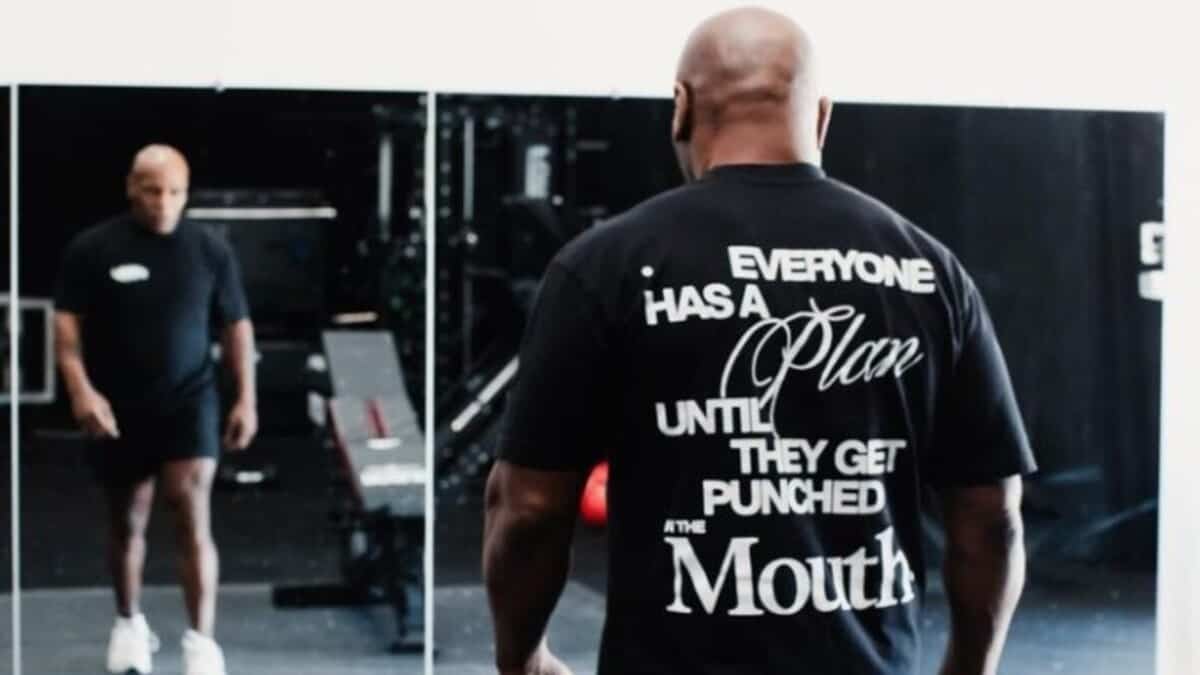That first title in 1984 was the United States National Junior Olympic Title at 54kg followed by the 1986 and 1987 National Golden Gloves Titles at 63kg and 71kg respectively in a sparkling amateur career which Jones expected to finish with a 1988 Olympic Gold Medal.
Jones had been used to winning and went into the 1988 Olympic Games in Seoul as the hot favourite to bring home the Light-Middleweight Gold Medal, he didn’t disappoint on his path to the final, dominating ever opponent without losing a round.
In the Final against home fighter Park Si-Hun, Jones continued in the same fashion, totally out-classing the Korean, landing 86 punches to 32 and was expecting what every non Korean in the world thought would happen, that Jones would be awarded the Gold Medal.
In one of the most shocking home decision moments in Olympic history, the judges scored the contest 3-2 to the Korean, an unbelievable turn of events and a total miscarriage of justice which to this day is still being appealed by Roy and his advisors.
It is hoped that the decision, which Park himself, allegedly apologized to Jones for, will be overturned and Roy will get the gold medal which he so obviously won in a contest that wasn’t even close.
After the bitterness of that experience, Roy decided to turn pro in mid 1989 after winning 121 of 134 amateur contests and knocked out his first 17 opponents with relative ease, 13 of which were in the first three rounds.
Roy was gaining notoriety for his extravagant costumes and ring entrances in the early years and combined with his explosive punching power, was gathering his fair share of newspaper column inches.
His first ten round fight was a decision win against former WBA World Middleweight Champion Jorge Fernando Castro before Jones followed that up with three more knockout victories to lead him into his first world title opportunity against Bernard Hopkins in 1993.
In May of that year, Roy defeated Hopkins at the RFK Stadium in Washington, 116-112 on all three cards and captured his first world title, the IBF Middleweight Title previously vacated by James Toney, who had moved up to super-middleweight earlier that year.
18 months later, Roy would himself move up to super-middleweight to challenge Toney for that belt with Jones knocking Toney down in the third on his way to an easy points win the capture the IBF Title and become two-weight world champion.
Six fights, six victories, five knockouts and five IBF Super-Middleweight title defences later, Jones was ready to move up to light-heavyweight to take on Mike McCallum in a WBC Light-Heavyweight Title eliminator at the Ice Palace in Tampa, Florida.
In November 1996, Jones unanimously defeated the Jamaican former two-weight world champion without losing around to improve to 34-0 with 27 knockouts and was widely thought as the best pound for pound fighter in the world.
Roy was ready for a third world title at a third different weight when he took on undefeated Montell Griffin in March 1997 at the Taj Mahal Hotel in Atlantic City.
Griffin had a perfect 26-0 record and came into bout on the back of an impressive points win over Jones’ former foe James “Lights Out” Toney.
In a close contest Jones floored Griffin in the seventh round and looked to have him in trouble but Griffin weathered the storm until the ninth round when Jones Jr rocked Griffin with a swift flurry of punches and had the Chicago man on one knee.
Montell looked in desperate trouble but to everyone’s disbelief Jones hit Griffin with a right-left combination whilst the dazed-looking fighter was still one knee and the hapless Griffin slumped to the canvas head-first.
With Jones celebrating and Griffin still oblivious to his surroundings, rumours started circulating at ringside that Jones would now be disqualified and lose his title, which was confirmed by the officials a few minutes later.
Griffin was therefore declared the victor and gained the WBC Light-Heavyweight Title on a DQ decision but Jones complained that if the referee would have stepped in, he would have immediately stopped throwing punches.
A rematch between Jones and Griffin was ordered almost immediately in the aftermath of the bout and five months later both boxers would do it all again at the Foxwoods Resort in Connecticut, this time with Jones challenging the new champion for his WBC Belt.
Griffin came in at the same 175lbs for the rematch with Jones a pound lighter at 174lbs, Roy looked focused on the job he had to do and seemed confident of his ability to do that job.
From the first bell Jones exploded all over the champion, rocking Griffin with his first punch which he never fully recovered from and in the last 30 seconds on the round, Jones unleashed a huge left hook to knock Griffin out and take the WBC Title with an amazing first round KO.
Roy Jones had once again shown the boxing world that he was pound for pound king and put himself back at the top of the fight game.
In his first defence he knockout out Virgil Hill (43-2-0) in the fourth round to set up a unification match-up with newly crowned WBA Champion Lou Del Valle, who had picked up the title by knocking out Eddy Smulders in September 1997.
The bout took place in July 1998 with Jones totally dominating proceedings in a near complete shut out performance to be crowned Unified Light-Heavyweight Champion of the World.
Two knockout defences followed before Roy added the IBF version after out-pointing Reggie Johnson 120-106 on all three cards and now had three out of the four Light-Heavyweight Titles along with an almost Tyson-like (early 80’s) aura of invincibility about him.
After another two routine defences of the his three belts, Roy seemed to add another title with every fight, beating Eric Harding to add the IBO version then Julio Cesar Gonzalez to add the WBF and IBA Title Belts.
Coming into the ring with six world titles around his neck and waist must of started to get tiring for the Undisputed Light-Heavyweight and pound for pound king.
After knocking out Glen Kelly and the British challenger Clinton Woods in the 6th and 7th rounds respectively, Jones decided to have a crack at the Heavyweight division, whilst at the height of his powers.
At the age of 34, Roy took on WBA Heavyweight Champion John Ruiz which meant that after reigning at his division for six years, Roy would have to vacate the other six light-heavyweight titles he already possessed in order to challenge for the heavyweight crown.
Roy put on 19lbs for the challenge against the much taller and bigger Ruiz, who tipped the scales at 226lbs and looked every inch of his six foot two inch frame standing next to sleaker challenger.
The bout took place in March 2003 at the Thomas and Mack Center in Las Vegas, with Roy starting well, staying away from the bigger man’s power punches and getting in and out with super-fast combinations.
Jones made Ruiz look silly and sluggish at times and made history to take the WBA Heavyweight Title away from the Hispanic champion, with all three judges giving it to Jones by at least four rounds.
Jones became the first former World Middleweight Champion in 106 years to win a Heavyweight Title after Britain’s Bob Fitzsimmons and the only fighter to start his career at light-middleweight and claim the Heavyweight Championship of the World.
After equalling Bob Fitzsimmon’s 1897 feat, Jones wanted to also achieve another of Fitzsimmon’s amazing accomplishments by regaining the Light-Heavyweight Title after winning the heavyweight crown.
In November 2003, Roy faced WBC Light-Heavyweight Champion Antonio Tarver at the Mandalay Bay Casino in Las Vegas, Jones had to lose nearly twenty pounds of the weight he had put on for the Ruiz fight to get back to his old fighting weight.
After a pulsating 12 round contest, the judges scorecards were totalled and when Jerry Roth’s card was announced at 114-114, it looked as if Jones might not achieve his goal, but the other two judges scored it in Roy’s favour and he was once again the Light-Heavyweight Champion of the World.
After the nature of the majority decision, Roy and Tarver were to square off again six months later, again at the Mandalay Bay.
Roy started well, catching Tarver with good shots with not much coming back from the challenger, but midway through the second round, Jones was caught with a huge left hand by Tarver, he almost fell through the ropes and was counted out by Jay Nady whilst still struggling to regain his balance.
It was a huge shock to the world of boxing as Jones had never been hit like that before and people were questioning whether father time had caught up on him or going up and down the weights had an impact on his body.
Roy’s biggest asset had always been his speed and ability to dodge punches, now if that was gone, was this the end of the line for the one time best fighter on the planet.
Four months later against IBF Champion Glen Johnson, Roy had a lot to prove as he tried to regain the Light-Heavyweight Title for the third time at the FedEx Forum in Memphis, Tennessee.
Jones didn’t start well and looked lethargic as Johnson took control of the fight and questions were being asked again about Jones’ weight and whether coming back down from heavyweight was the right thing to do.
With Johnson throwing twice as many punches as Jones, the crowd were starting to get on Roy’s back and Jones started looking desperate until the ninth round when Johnson threw an almighty right hand to Roy’s temple and he was knocked out cold and spent almost four minutes on the canvas.
Roy left the building in an ambulance and it was seemingly the end for Jones after a glittering career in the fight game.
Jones spent almost a year out of the ring assessing his situation before deciding on a rubber match with Antonio Tarver, with the first two contests being won by either boxer.
At 36 years old, people were calling it a win or retirement match for Roy who again didn’t look himself and lost a unanimous decision to Tarver to lose the series 2-1.
Nearly another year out followed before Roy came back once again, taking on Prince Badi Ajamu and getting back on track with a landslide points victory before then beating Anthony Hamshaw, who was previously unbeaten.
The victory over Hamshaw was seen a resurgence by the now 38 year old Jones, who was still determined to win back the Light-Heavyweight Title that he once made his own.
In January 2008, Roy took on Felix Trinidad, who had been gradually moving up the weights claiming world title after world title, the bout took place at Madison Square Garden in New York.
It proved to be one weight too far for “Tito” Trinidad in what proved to be his last fight, he was beaten unanimously by Jones Jr 117-109, 116-110, 116-110 and retired immediately afterwards.
Ten months later, Roy would face former Undisputed Super-Middleweight Champion Joe Calzaghe again at the Garden it what was seen as the British fighter’s legacy sealing fight, but only if he could beat a resurgent Roy Jones.
Roy seemed bewildered by the Welshman’s style and never looked likely to beat the younger Calzaghe, who looked like a mirror image of Jones but only 8 or nine years earlier and beat Jones convincingly 118-109 on all three cards.
Jones decided to fight on, beating a lacklustre Omar Sheika and a washed up Jeff Lacy in 2009 before moving up to cruiserweight and travelling half way across the world for a bout with little known Danny Green of Australia on his home soil.
The bout was for Green’s lesser regarded IBO version of the Cruiserweight Title and by this stage of Roy’s career, nobody knew which Roy would turn up, the good or the awful.
Sadly for a 40 year-old Roy Jones Jr, it was the latter as Green caught Jones in the opening round, dropping him to canvas for an eight count before jumping all over the stricken former world champion and stopping him just two minutes into the first round.
People were now screaming for Roy to retire and keep some of his legacy in check, but like the fighter he is and with everything to prove, Roy announced he would sign for a rematch with Bernard Hopkins 17 years after their first meeting ended with a Jones points win.
With Hopkins now 45 and Jones 41, it broke the record for the oldest contestants in a pay-per-view event beating the Lou Savarese and Evander Holyfield bout three years earlier.
The media nicknamed the bout “Seniors Night” or “Oldies Night” although it was officially titled “The Rivals” and with most of the media deciding not to show the contest, the bout seemed to lean more towards a farcical match-up rather than a serious boxing contest.
Hopkins got his revenge in a dull affair which went the full 12 rounds, “The Executioner” won almost every round comfortably to take the unanimous points win.
It was reported that Hopkins collapsed after the contest and both men had to be taken to hospital as a precaution, but neither fighter has shown any sign of wanting to quit boxing in the near future. Both fighters had contrasting fortunes in their latest bouts, with Hopkins regaining the world title and Jones being brutally knocked out by Denis Lebedev.
Hopkins is now hoping to extend his record as the oldest world champion in history as Jones hopes to secure another shot at the world crown on the back of a contentious points win over Peter Glazewski to win his second fight in a row.
Whether Roy will throw in the towel anytime soon remains to be seen, but my guess is that he will still be climbing between the ropes a year from now. As for Hopkins, a defeat against the dangerous Tavoris Cloud on March 9 will surely spell the end of fantastic career.
Jones, when he finally calls it a day, he will be remembered for being one of the most exciting knockout fighters of all time in his hey day and most definitely deserves the title of ‘Fighter of the Nineties.’
Roy has won a recognised version of the world title of seven occasions in four weight classes, a feat that cannot be ignored in any era, and at his highest career point seemed untouchable by any fighter in the world.
His career record to date stands at 56-8-0 and another chapter still remains unwritten…




